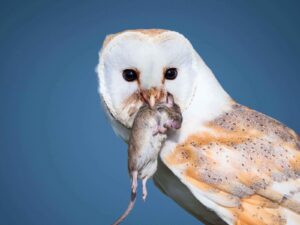What Colors are Owls?
-by Ishita Mondal
–Reading Time – 8 min Approx
–Edited by – Srishti Bhattacharyya
“You are still awake? It’s 1:00 AM!” Smita asked her roommate Jaya.
“Oh, yes, dude! I am one of those night owls, you know?” Jaya promptly answered.
Not only Jaya but also many other people often associate midnight with an owl. The primary reason is owl is one of the most popular nocturnal living beings. When the entire world goes to sleep, the owl spreads its long wings and prey. If you have ever woken up at night and looked out the window, you may have experienced how mystically they fly. However, it is hard to observe an owl for a long time. They are shy in nature and prefer to hide from others. Due to their concealing nature, you may not see them frequently. Therefore, mystic myths have been developed, stories have been written on this ‘king of the night.’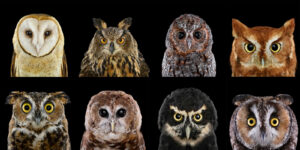
A wide range of questions come into our minds regarding owls. We are sure you have wondered, “What do the owls eat?” or you had the questions like “Where do the owls live in the daytime?” in your childhood. Among all of the doubts and queries, one question is prevalent. And that is what color are owls? From little children to adult fellows interested in animal life, this question is asked often. As there is barely a chance to visit an owl except going to the bird sanctuary, people are curious to know what color are owls.
So, here in this article, we will discuss what colors owls can be. In this context, let us tell you that the colors of the owls’ eyes can be different from their feathers. Their beaks also have their own colors. In short, owls are diverse both in types and colors. Nature has decorated them with a wide range of hues. Unfortunately, we cannot experience the creation much. But, you need not keep your face down! We have summed up all of our research details here in this article. It will answer the question – what colors are owls. Enjoy the reading until the end to learn some interesting facts about the owls.
What Colors are the Owls – The Types:
While thinking about types of owls, we often think of the various kinds of owls shown in the movies of Harry Potter series. From Malfoy’s large Eagle Owl to Ron’s little owl, Harry’s Hedwig, or the unique ghost owl – a wide range of different kinds of owls are present in the premise of Hogwarts. But is it limited to those types only? No. Not at all! There are nearly 200 species of owls in this world. If we start naming them one by one, the day will be over.
So, here let us describe some of the popular species of owls found around us. All of the species of the owls can be classified into two major groups – true owls and barn owls. True owls can be found in almost every country except Antarctica. On the other hand, barn owls are large-sized owls found everywhere except in the polar and desert regions. There is not much difference between barn owls and true owls except for some characteristics and behavioral features. Let us share some fantastic owl types that will definitely amaze you.
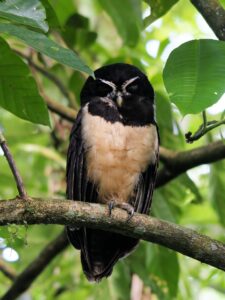
Speckled Owl:
This type of true owl is majorly found in Southern Mexico, Central America, and parts of South America. The scientific name for this species is Pulsatrix perspicillata. These owls prefer living in dense forests, especially rainforests and hunt small nocturnal mammals. Now, you may think, from where on earth did this name come from? Well, it is due to the white rings around their eyes. The white rings around the yellow eyes give them an appearance like a spectacle.
Oriental Bay Owl:
Phodilus badius or the Oriental bay owl can be found in different areas across the Southeastern parts of Asia. They prefer to dwell near the water bodies in dense forests. Although they look like the typical barn owls, they are smaller than those typical barn owls.
Long-eared Owl: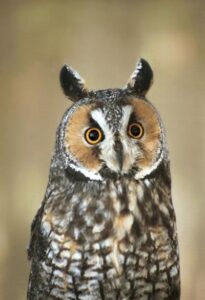
Yes! You got it right! These owls have long ears. It usually nests in abandoned nests of similar-sized birds such as hawks, ravens, etc. With the scientific name of Asio otus, these owls can be found in North America, Asia, and Europe. They are known for forming systematic monogamous pairs after the amazing areal courtships.
Eastern Screech Owls:
Contrary to its name, it does not actually screech. This kind of owls is usually from six to nine inches tall. They prey on small mammals like insects, frogs, lizards, etc. Eastern Screech Owls (Otus asio) have an exceptional quality of camouflaging their appearance. Ranging from Canada to Mexico, this species can be found across eastern North America.
Eurasian Eagle-Owl:
This kind of true owls is seen majorly in Europe and Asia. Its scientific name is Bubo bubo. It is considered one of the largest owl species, which comes with a five to six and a half feet long pair of wings. Eurasian Eagle Owls prey on small mammals and reptiles. Whether it is forest, desert, or mountain, they nest in any kind of geographical region.
Snowy Owls:
The snowy owl or Bubo scandiacus is another type of true owl. It is one of the heaviest species of owls. Although it is mainly found in Arctic Tundra, you can see them in North America, Europe, and several parts of Asia. IUCN has included it in the list of vulnerable species. Majorly, they prey on lemmings.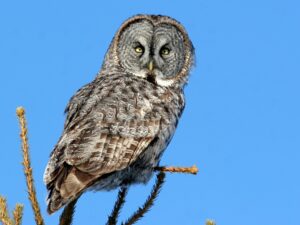
Tawny Owls:
Tawny owls or Strix aluco is a type of true owl that resides in Palearctic Region. It is located in the South of the Iberian Peninsula. These owls can build their nests anywhere – from forests, gardens to the alienated cemeteries. In England, they are considered to be one of the most popular breeds of owls. These owls hunt rodents, birds, insects, and different kinds of amphibians. Their preferred time for locating prey and hunt is between dusk and dawn. They are incredibly protective of their nests and broods.
Great Grey Owls:
The scientific name for the Great Grey owls is Strix nebulosa. Majorly found in different parts of Europe and Asia, this species is also found in the northwestern part of the U.S., Canada, and Alaska. They are primarily found in areas without much human contact. With its fluffy feather, it appears like a giant bird to hunt its preferred prey.
Well! These are just glimpses of a wide range of varieties that you can find in the species of owls. Now, let’s know what the colors of owls are.
What Colors are Owls:
Coming to the context of real owl color, owls are of various colors. Like the variations in their types, they have variations in their colors too. Most of the owls are found with different streaks, bars, and spots of color. However, some of them are found with solid colors on their feathers. Are there any blue owls? Well, as per the study, there are no blue owls found. What we can see is only the owl with blue-grey eyes.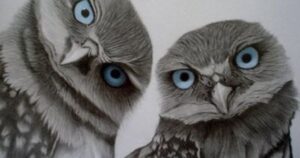
So, owls are mostly found with color streaks, dots, and stripes on their body. Nature has gifted them with this exceptional quality so that they can hide amidst the bushes and trees. They use this gift to camouflage themselves while preying. Moreover, it also helps them to conceal themselves from human notice. In Screech owls, you can find the concealing pattern of the soft brown or grey ground color. Often, the colors become more glorified with blackish bars. You can also see shaft streak sometimes. In some of them, both shaft streaks and blackish bar can be found.
In the popular species like Eurasian scopes owl and the screech owl, one can find diversity in sub-types as per the different geographical locations. If you go far north, you can find a faded layer of the whitish background. The owls living in temperate forests showcase dark themes on them. It is pretty bold in appearance. If you want more knowledge on what colors are owls, you can have a visit to the desert. A fine grey pattern on the owls awaits you there. In tropical areas, too, there are variations in the colors of owls.
You can find fine patterns on rufous in arid tropics, and in humid tropics, you can find deep course patterns. Although a single gene determines the base color, the various kinds of owls like screech, scops, or whiskered ones can be grey or rufous. In the deciduous forests in America, the red phase of the screech owls may be found often. As there is a blend of summer and autumn, you can find blends of reds and browns.
So, thus, the owls have a wide range of color variations. For common people, such different shades and terms may sound confusing. So, in rural areas and even in urban areas, they have simply categorized the hues on the owls into two categories. In some places, the categories are solid-colored and sprinkled-colored. And in some places, people classify them as black owls and white owls. The lack of opportunities to see the owls for a long time may lead to such simple classifications. No matter how they are classified, it is sure that the predator or nocturnal birds have their own aura with various mystic colors.
Before you Go- A Trivia on Owls:
So, now you know what colors are owls? Let’s end the platter with a sweet-tangy mouth freshener of some trivia on owls.
- Owls do not have eyeballs.
- Owls can rotate their necks at 270 degrees.
- They have three eyelids – for blinking, sleeping, and keeping their eyes clean.
- Female owls happen to be larger and more aggressive than males.
- Owls are carnivores.
-by Ishita Mondal
Dear Reader, Hope you liked the post. If you think our initiative “The Creative Post” is worth supporting, then please support us by paying the amount you think we are worthy of. We believe, the value of content should be decided by the consumer. Hence we request you to evaluate our worth and pay accordingly by Clicking Here.
